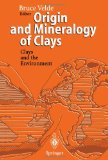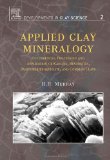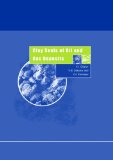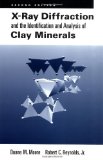Clays
- 1st Latin-American Clay Conference - CLAYS In Volcanic Environments, Funchal – Madeira, 17-22 September 2000
- 2nd Asian Clay Conference - 6-8 September 2012, Seoul, Korea
- 2nd Mid-European Clay Conference, Miskolc 2004, Book of Abstracts

- 3rd Mediterranean Clay Meeting - September 30 - October 3, 2002, Jerusalem, Israel
- 4th Mid-European Clay Conference
- 5th Mid-European Clay Conference, Budapest 2010, Book of abstracts

- 6th Mid-European Clay Conference
- XV International Clay Conference - 07-11 July 2013 Rio de Janeiro, Brazil
- African Clay and Clay Minerals Research Group
- Associacao Portuguesa de Argilas
- Associazione Italiana per lo Studio delle Argille
- Australian Clay Minerals Society
- Biogeochemical Processes in a Clay Formation In-Situ Experiment: Part E - Equilibrium Controls on Chemistry of Pore Water from the Opalinus Clay, Mont Terri Underground Research Laboratory, Switzerland

- Ceramics and Industrial Minerals
- Clay Mineral Evolution, Basin Maturity and Mudrock Properties - BGS, Keyworth/Nottingham UK, 13-14 Nov. 1997
- Clay Mineralogy at the University of Georgia
- Clay minerals as palaeoenvironmental indicators in the Bathonian (Middle Jurassic) ore-bearing clays from Gnaszyn, Kraków-Silesia Homocline

- Clay mineralogy of red clay deposits from the central Carpathian Basin (Hungary): implications for Plio-Pleistocene chemical weathering and palaeoclimate

- Clay Minerals Society
- CMLM2013 - Clays, clay minerals and layered materials - 02-06 September 2013, Saint Petersburg, Russia
- Composition of Clay Minerals from Hemipelagic Sediments at Hydrate Ridge, Cascadia Subduction Zone

- Crystallite size distribution of clay minerals from selected Serbian clay deposits

- Czech National Clay Group
- Distribution and Origin of Clay Minerals in Konya Neogene Sedimentary Basin, Central Anatolia, Turkey

- Distribution of clay minerals in Early Jurassic Peritethyan seas : palaeoclimatic significance inferred from multiproxy comparisons

- Environmental Interactions of Clays

- European Clay Groups Association (ECGA)
- European Workshop on Clay Mineralogy
- Genesis and characteristics of primary kaolinitic clay occurrence at Bukit Lampas, Simpang Pulai, Ipoh

- Genesis of the hydrothermal Karaçayır kaolinite deposit in Miocene volcanics and Palaeozoic metamorphic rocks of the Uşak-Güre Basin, western Turkey

- Geology of Late Miocene clayey sediments and distribution of palaeosol clay minerals in the north-eastern part of the Cappadocian Volcanic Province (Araplı-Erdemli), central Anatolia, Turkey

- German-Austrian-Swiss Clay Group
- Grain-size analysis of the Neogene red clay formation in the Pannonian Basin

- International Association for the Study of Clays
- Jurassic clay mineral sedimentation control factors in the Essaouira Basin (Western High Atlas, Morocco)

- Key role of micromorphology in studies of the genesis of clay minerals and their associations in soils and its relevance to advances in the philosophy of soil science

- Late Holocene climatic oscillations traced by clay mineral assemblages and other palaeoceanographic proxies in Ria de Vigo (NW Spain)

- Listserver for the Clay Minerals Society
- Modern and late Quaternary clay mineral distribution in the area of the SE Mediterranean Sea

- Natural iodine in a clay formation: Implications for iodine fate in geological disposals

- Origin of Kaolin Deposits: Evidence From the Hisarcık (Emet-Kütahya) Deposits, Western Turkey

- Palaeoenvironmental reconstruction of Bathonian (Middle Jurassic) ore-bearing clays at Gnaszyn, Kraków-Silesia Homocline, Poland

- Presence of bentonite beds in the earliest Eocene Tienen Formation in Belgium as evidenced by clay mineralogical analyses

- Russian Clay Group
- Slovak Clay Group
- Sociedad Española de Arcillas (SEA)
- Uranium sorption on clay minerals

Books about clays







